 |
|
|
|
|||||||||||
BEIJING - China will pursue balanced, progressive and mutually beneficial foreign trade development from now until the end of 2015, according to an official plan released Thursday.
The country is going to make substantial headway in promoting steady growth and balanced trade under a program for foreign trade during the 12th Five-year Plan (2011-2015) period released by the Ministry of Commerce (MOC).
Imports and exports are expected to see steady growth during the five-year period, with the total trade volume growing by an average annual rate of around 10 percent to reach about $4.8 trillion by 2015.
"The trade balance situation will continue to improve," the ministry said.
First of its kind
This is the first time for the Chinese government to release a five-year program on foreign trade development.
China mapped out this plan in order to guide all local authorities and industries to work on the central tasks of foreign trade and enhance the relatively fast and sustainable trade growth, an official with the MOC's foreign trade department said in an online press release.
The plan has listed "promoting steady growth, adjusting structure and seeking balanced trade" as its key tasks for trade development over the next five years.
China will nurture new strengths in global trade competition, raise the quality and efficiency of foreign trade and reinforce trade balance and sustainability, said the plan.
"The country should consolidate its position as a large trading nation and forge ahead with the drive to become a strong trading nation," according to the plan.
China's trade volume expanded at an annual rate of 15.9 percent during the 11th Five-year Plan (2006-2010) period, data from the MOC shows.
Taking into full account the growth in the previous five years and the complicated trade environment now, China has decided to lower the trade growth target to 10 percent, the official said.
China's trade growth is facing exterior challenges, including the sluggish world economic recovery, rising trade protectionism measures, volatile commodities prices and exchange rates of major currencies and increasingly fierce competition from other countries.
Seeking mutual benefit
China's trade volume hit $2.97 trillion in 2010, making China the world's largest exporter and the second-largest importer.
"Made-in-China products promoted the welfare of global consumers, while the Chinese market spurred the economic growth of related countries," according to the plan.
The plan has made seeking mutual benefit and a win-win situation one of its basic principles for trade growth, signaling the country's determination to make trade more balanced during the new era and bring more benefits to trade partners.
The country should implement an active import strategy and properly handle trade frictions to achieve a win-win situation for all trade partners, the plan said.
"China will actively participate in the restructuring of international economic and trade governance and fully consider the interests of trade partners with different development levels," it said.
A major task for China is to further expand its import sector in seeking balanced trade, the plan pointed out.
"The country is going to urge developed nations to relax controls over high-tech products exported to China," according to the plan.
China will increase imports of high-tech equipment, key parts, resources and materials, as well as consumer goods.
China's trade structure has been constantly optimizing in recent years, as its trade surplus has been narrowing since 2008.
Its annual trade surplus narrowed 14.5 percent year on year to $155.14 billion in 2011, according to data from the General Administration of Customs.
Unlike Huaxi, Changjiang keeps low profile as it spreads the wealth
As China still marvels at a small oasis of prosperity and comfort created by its richest village of Huaxi, a powerful competitor has unintentionally stolen the limelight by giving each villager two 100-gram bars of gold and silver.
In mid-March, Changjiang, several hours by car northwest of Shanghai, fulfilled a promise made in 2009 to hand out the valuable metals, worth more than 40,000 yuan ($6,350), to each of its 2,858 permanent residents.
|
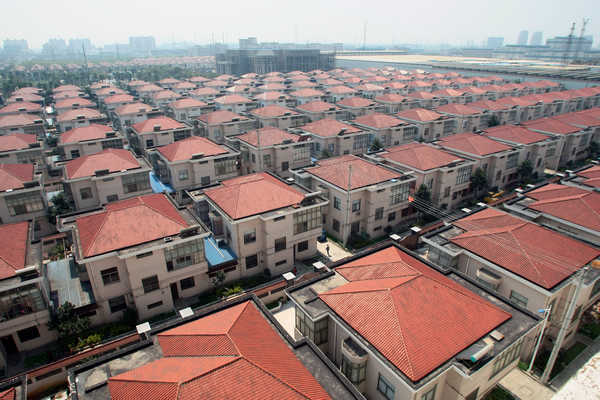 |
|
Rows of villas line the street in Changjiang village, Jiangyin, East China's Jiangsu province. Weng Lei / for China Daily |
The gift, made in celebration of the 40th anniversary of the village-owned Jiangsu Xin Chang Jiang Group, drew enormous attention at a time when China's widening income gap and unfair wealth distribution increasingly cause social problems.
Recent polls by major Chinese news organizations showed that narrowing the income gap is seen as the highest priority topic that must be addressed by the country's leaders.
Yet Changjiang, a 6.5-square-kilometer village not far from the urban center of Jiangyin, seemed untouched by the problem and to be moving toward a utopia where residents share in the common prosperity.
Apart from the gift of gold and silver, residents said they have enjoyed a long list of benefits, including subsidized villas that were sold for 68,000 and 198,000 yuan starting in 2000.
"How is that different from a free handout?" asked Zhang Rongxian, a resident, showing the strikingly similar two-story villas with spacious courtyards.
Other benefits have included occasional handouts of cash, shares in village companies and annual dividends, as well as a quota of free water, electricity, gas and food coupons every month.
But unlike the high profile Huaxi, which also falls under the jurisdiction of Jiangyin in Jiangsu province, village heads stay low-profile about the riches of Changjiang and have turned down almost all interview requests since the village was catapulted to fame when it issued two 100-gram bars of gold and silver to every household (rather than each person) in a preliminary celebration in 2010.
In a 2010 interview, Li Huixia, a public relations official with the Xin Chang Jiang Group, said the gold and silver were given to residents as tangible benefits of the village's prosperity and the value of the metals would appreciate every year, making them even happier.
Due to its low profile, the village sees hardly any tourists on a typical day. It is a modern area where industrial plants and modern dwellings have long replaced farmland, unlike the common notion of what a Chinese village should look like.
In its southern parts stands a gigantic stone gate with five gilded Chinese characters that read "Changjiang Village of China", easily visible from a distance. A major boulevard, flanked by 818 villas in neat rows, divides the village in two.
Utility companies and steel, pipe and ship recycling factories are among the enterprises in the north and far east and west of the village, which is green with plants.
The hospitality common in rural homes is not obvious in Changjiang, where each household locks itself behind bronze gates forged by the village as another gift to residents.
The people go to the village's central park after dusk, said two women from a nearby village.
Busy taking care of their children, they are the only visitors in the morning to the park that has luxury facilities such as tennis courts.
Village patriarch
Like Huaxi, Changjiang was led to prosperity by a revered patriarch, Li Liangbao.
When China embraced reform and opening-up in the 1980s, Changjiang was an agrarian hovel reachable by dirt roads.
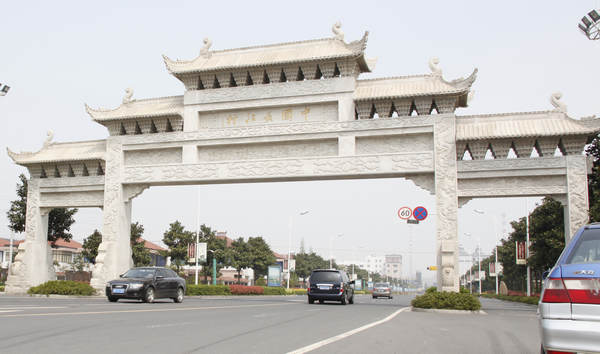 |
|
A stone gate, in the shape of Chinese paifang (memorial archway gate), stands in the south of the village. Wang Zhenghua / China Daily |
Li, then the local Party chief, seized on the new market freedoms to shift its economy from farming to manufacturing, with an initial investment of 700 yuan of collective funds in 1972.
After years of hard work, the diligence of Li and his team is paying off. His two small brick kilns have grown into a conglomerate diversified in iron and steel, fasteners, chemicals, steel tubes and plates, as well as hotel, real estate, logistics, investment and import and export businesses.
In 2011, the Xin Chang Jiang Group, comprising 17 subsidiaries, had 48 billion yuan turnover, placing it 195th among the top 500 businesses in China. By 2015, the group plans to generate 120 billion yuan in sales revenue.
"Only ponder the path to success, and don't seek pretexts for failure," Li said in a slogan, which is printed on the back of a monument in the village's central park, along with more of his beliefs, such as "care about common people and reward society".
Under his leadership, Changjiang has clearly prospered. The villagers get lavish annual stipends, live in spacious single-family homes instead of the country's usual cramped apartments, drive imported cars, and get basic insurance and education.
Everyone owns a piece of the conglomerate, bringing every resident dividends in recent years.
"Compared with Huaxi, the benefits in Changjiang are pretty practical," said Gu Weiming, a local restaurant owner.
The 72-year-old Li Liangbao is honored in the community but is scarcely known to the outside world. Introductory material given by local publicity officials indicate that Li was a workaholic in the past decades.
"To fulfill his promise, he always gets up at around 4 or 5 o'clock in the morning," the material said. "He left footprints at every corner of the village as he inspected factories and construction sites to ensure the scheduled progress and quality were achieved.
"His head was like a computer, his brain as useful as a database."
Safe and sound
Almost every resident approached by China Daily bubbled with joy talking about life in Changjiang. Villagers said they feel safe and live comfortable and leisurely lives.
According to the local police station, in the half month ending March 31, the community saw a total of six thefts and no other crimes.
|
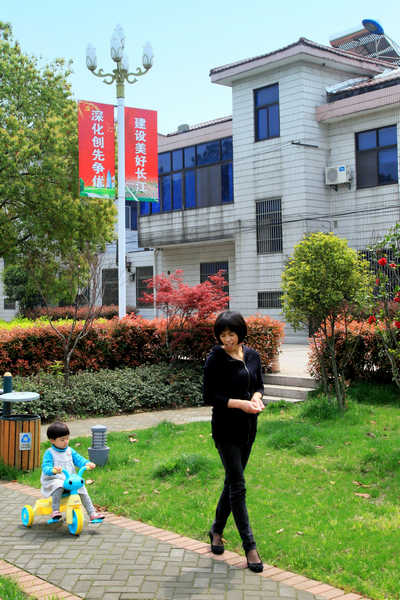 |
|
A villager and her daughter enjoy themselves on a footpath in the village. Li Gen / for China Daily |
Liu Li, an auxiliary police officer at the community police station, said Changjiang is safer than most other areas in Jiangsu.
"Security guards patrol the village three times a day and residents feel safe here," she said.
But in the pursuit common prosperity, individuality and personal choice can suffer.
Families said they could not say no when the village proposed installing identical bronze gates at every household.
Villagers are not allowed to sell the gold and silver bars they were given because they are meant as commemorative items honoring Li, the village patriarch.
A slogan seen around the community reads: "Win honor for the government and don't bring it trouble."
On the political rights of local residents, the latest issue of the group's newspaper suggests that the sessions of workers' congress were held regularly, and Fan Xinglong, the village head, made a work report at the latest session on Feb 20.
"The election of village officials were held regularly," said Cao Jinqing, 66, a retired veterinarian.
"But only those making outstanding contributions to the village and who have a certain prestige could be chosen as candidates for village chiefs," he added.
The prosperity is closely linked to the village-owned group, a family business where Li's three children head a number of its subsidiaries. But few in the village have a clear idea of the share structure of the group.
Along with sharing in the success of these profitable industries, residents have to put up with the potential pollution.
In the west of the village, the Changjiang Steel Pipe plant owned by the group, separated from the living quarters simply by a wall, gives off a pungent odor.
Dividends paid out
Professionals in rural area studies said that the handout of gold and silver bars in Changjiang is just another form of distributing the dividends to involve everyone in the profit and success.
The success stories of the rich villages in East China are similar, they said. These villages seized golden development opportunities, had a capable leader and a management team full of family business features.
"More attention should be given to how to improve the wealth distribution and let the residents have a clear idea of how large a share they own in the collective assets so that they can anticipate such distribution," Du Zhixiong, a rural development institute professor at the Chinese Academy of Social Sciences, said in a recent interview.
Contact the writer at wangzhenghua@chinadaily.com.cn
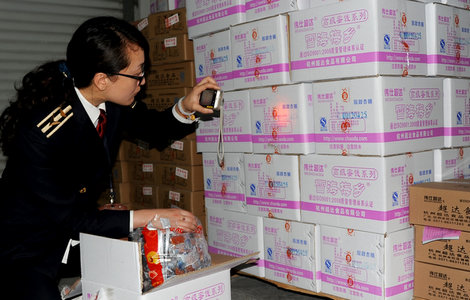
|
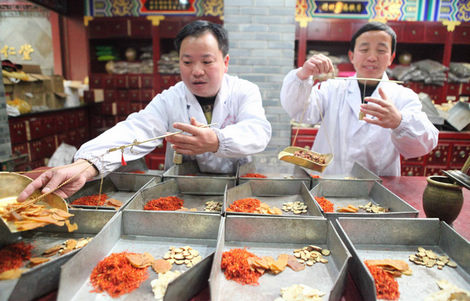
|
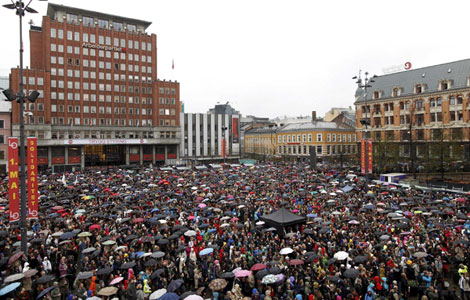
|

|

|

|